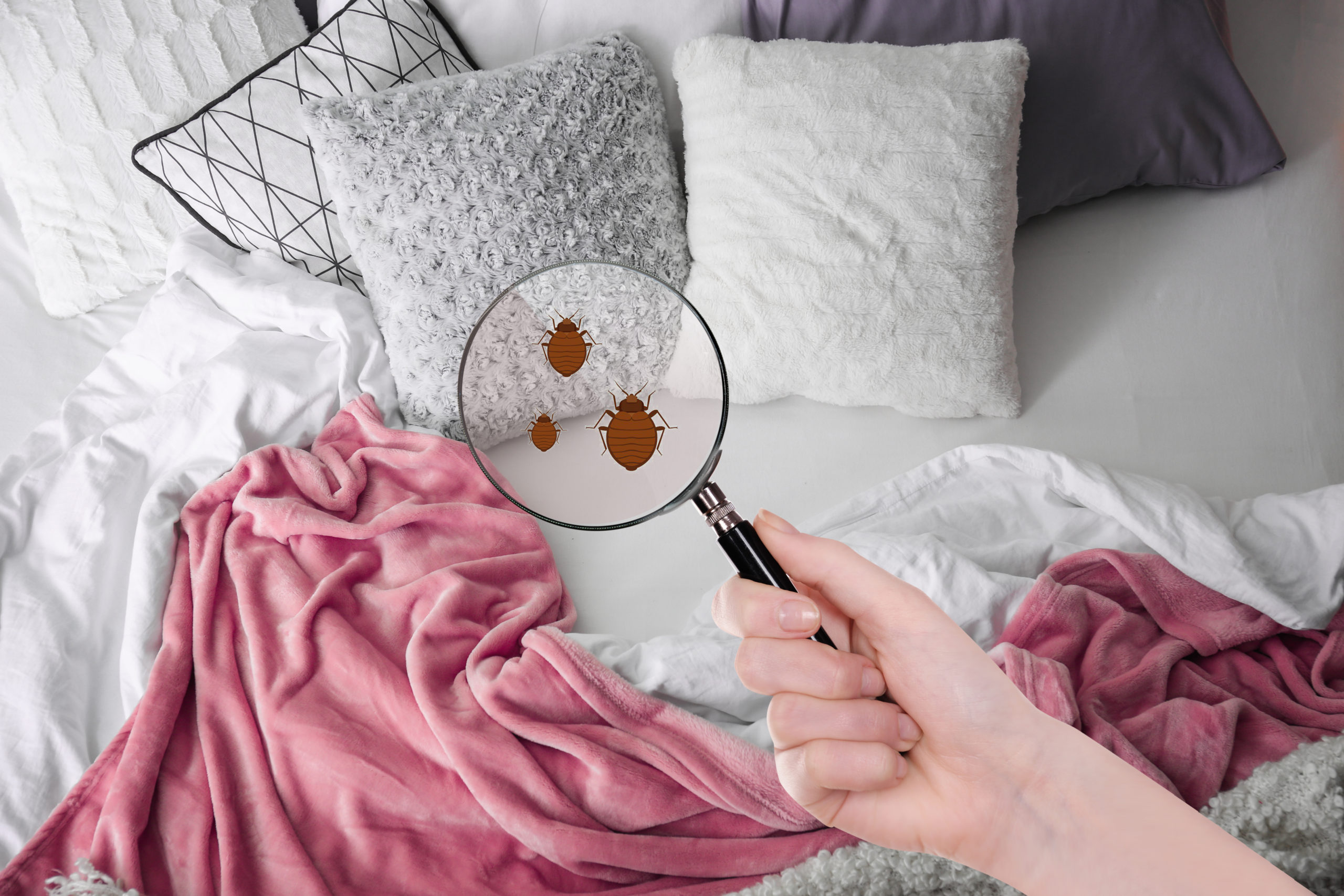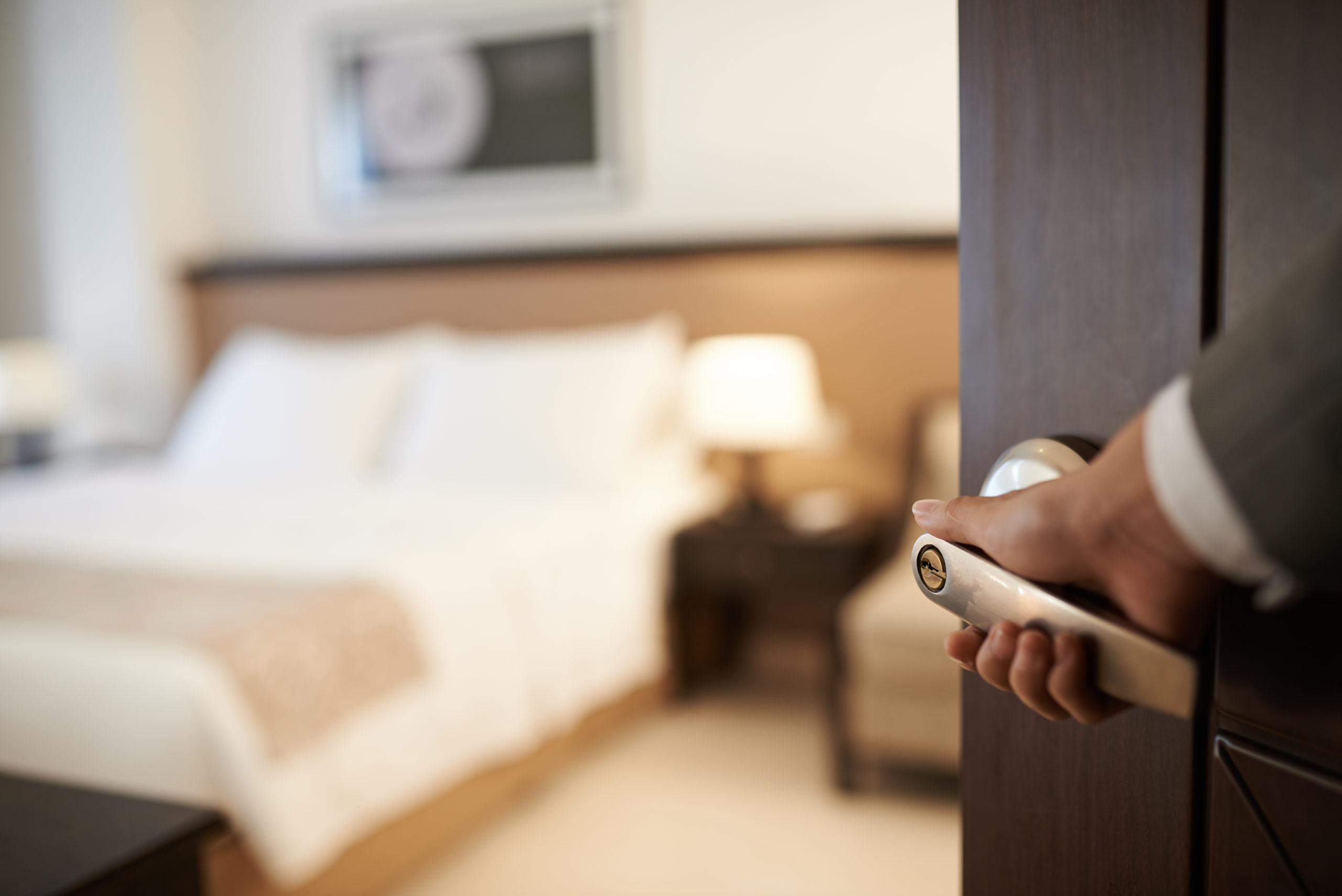Top 5 Places Where You Can Get Bed Bugs
Top 5 Places Where You Can Get Bed Bugs
The Bed Bug Spread
With the world being more connected than ever, we are able to share so many beautiful things include culture, fashion, cuisines, stories, and so much more! But unfortunately, this also puts us at more of a risk of sharing some not so pleasant things… including parasites. Bed bugs in particular have a proclivity for being shared from place to place due to their tendency to hitchhike. They are photophobic creatures that prefer to find tight dark crevices in which to hide. This can include the inside of purses, backpacks, luggage, clothing and more – all places that put them at an advantage for travel.
With their populations so rampant and the risk of an infestation of your own rather high, it can be useful to know what places in your life are most likely to put you at risk of taking these pests home. The following (in reverse order) are the topmost likely places that you could get bed bugs from.

5. Schools and Dormitories
Schools and their libraries, auditoriums, gymnasiums, cafeterias, and offices are all highly trafficked by students, staff, and parents, making them a potential spreader of bed bugs. Due to their tiny size and flat-shaped bodies, bed bugs can hide in a vast number of places in schools, including backpacks, chairs, toys, purses, boxes, wheelchairs, bookshelves, rugs, behind posters, inside gym mats, and more.
In addition to schools themselves, college dorms can also be a big hub for bed bugs. This can be due to so many students living in close proximity with one another, friends and family that constantly visit, secondhand furniture being brought into the dorms for use, and even moving blankets from trucks used to move students into their new living spaces.

4. Thrift Shops, Consignment Stores, and/or Yard Sales
Bed bugs can hide in all kinds of secondhand furniture and decor including couches, recliners, beds, upholstered chairs, pillows, dressers, curtains, chaises, cribs, blankets, and more. This is one of the easiest ways for bed bugs to access new homes. As such, if you are considering bringing any of these items into your home, it is very valuable to spend the couple of minutes it takes to check them over for bed bugs to avoid a potential massive and expensive infestation down the road. We recommend you follow these steps for proper inspection:
- Lift any cushions and inspect all around them
- Examine areas beneath cushions
- Look along any fabric folds/creases moving the crease to get a clear view
- Check the parts of the furniture where they connect (ie. legs to the base of the chair, etc.)
- Inspect the underside of the furniture, lifting the dust cover if possible
- If there are any cracks in the furniture, be sure nothing is hiding in them
- If there are tears in the fabric cushions, try to look inside the hole and ensure nothing (not just bed bugs) could be hiding inside. If you have any doubts, consider replacing the stuffing/foam and re-seal the cushion.

3. Nursing Homes, Retirement Homes, and Assisted Living Facilities
Unfortunately, nursing homes are notorious for bed bug infestations. Residents live in such close quarters with one another, making it super easy for the bugs to spread. Furthermore, it can be difficult to treat infestations in these facilities due to the limitations and health concerns of the residents. The best way to combat this is through diligence, which can help you stop a problem in its tracks before the living quarters falls victim to a full-blown infestation. Regularly inspect the bedding and furniture in the rooms of your loved ones and report any finding or concerns you have to the home’s manager.

2. Your Friends or Family
If you have a friend visit and soon find out they’ve been a victim of bed bugs… you might want to inspect your own home just in case. Bed bugs can travel super quickly from one home directly into another and will often use clothing or purses as transportation. This makes it increasingly likely that friends and family could unknowingly spread bed bugs to you.
This is why it’s very important to inform the friends and family you’ve been in contact with if you find out you have bed bugs or have been in contact with them. While it can be embarrassing to admit to your friends and family that you have an infestation, it is exceedingly more embarrassing to be the cause that they have them as well. Not only is it important to inform anyone who has been in your home recently, but also anyone who you’ve exchanged any furniture, clothing, or other items with. By simply providing them with a quick warning call, you could help prevent a world of headache for them as they may be able to take the steps to ensure the problem hasn’t/doesn’t spread into their home.

1. Hotels/Motels
Unsurprisingly, hotels and motels are the most likely places to encounter bed bugs. In fact, the likelihood is so high, that they’ve gained some infamy for being beg bug hubs.
So, how do you avoid them? A fantastic first step is to check the Bed Bug Reports (https://www.bedbugreports.com) for your intended hotels. These reports will not only inform you if the location ever had an infestation, but they include the dates and sometimes even photographs and room numbers of where the bugs were spotted. Even if your hotel isn’t listed, it doesn’t mean you’re completely in the clear. When you first arrive at your hotel room, inspect your room carefully, even using a flashlight if possible as bedbugs will try to hide in dark areas.
If you happen to find bed bugs in your room, leave! You shouldn’t pay a hotel to be a victim of parasitic pests and, both morally and sometimes legally, they can’t require you to still pay for the room. We highly recommend you take pictures of the bugs as well as any blood stains on the sheets or bite marks you sustained from staying in the room as proof of your experience (this is extra helpful if you run into any resistance from the hotel). You can even try to capture one of the bugs to bring it to the front desk and show the manager. If you’re comfortable with it, you can simply request a room change, or you can change hotels if you prefer the extra safety and peace of mind.
If you suspect that your precautions weren’t enough, and you’ve stumbled upon bed bugs. Here are some tips to avoid spreading them back into your life:
- If you are getting back into your car or a taxi, try wrapping your luggage in a garbage bag to reduce the risk of the bugs spreading during transportation.
- If bed bugs were confirmed, it is often the best course of action to toss your luggage. While you may miss out on a bit of an investment, the cost of ridding your entire home of the nasty bloodsuckers is far worse on your wallet, well-being, and sanity.
- Leave shoes and any other items that may have been infested outside of your door. Inspect and clean all these items before bringing them back into your home.
- Wash all clothing that may have been exposed in extremely hot water. Or, if the clothes are already clean, try putting them through a hot cycle in the dryer as the heat will kill the bed bugs and their eggs.
But if you’ve unfortunately gotten bed bugs from a hotel room, no need to fear. Call us right away! We are experts at bed bug control and can eliminate those parasitic pests from your home for good.

How to Maintain a Pest-Free Kitchen for the Holidays
How to Maintain a Pest-Free Kitchen for the Holidays How to Maintain a Pest-Free Kitchen for the Holidays Summary: This blog educates homeowners [...]
Pests That Invade Packages & Boxes: How to Prevent Hidden Infestations
Pests That Invade Packages & Boxes: How to Prevent Hidden Infestations Pests That Invade Packages & Boxes: How to Prevent Hidden Infestations Summary: [...]
Keep Pests Out of Your Holiday Gatherings
Keep Pests Out of Your Holiday Gatherings Keep Pests Out of Your Holiday Gatherings Summary: The holiday season is all about good food [...]
Cold Weather vs. Warm Weather Infestations: How Temperature Shapes Pest Activity
Cold Weather vs. Warm Weather Infestations: How Temperature Shapes Pest Activity Cold Weather vs. Warm Weather Infestations: How Temperature Shapes Pest Activity Summary: [...]
Garden Pests Do Not Hibernate Indoors – How They Attack Houseplants And What To Do
Garden Pests Do Not Hibernate Indoors – How They Attack Houseplants And What To Do Garden Pests Do Not Hibernate Indoors – How They Attack [...]
The Scariest Pests (And Why They Freak Us Out)
The Scariest Pests (And Why They Freak Us Out) The Scariest Pests (And Why They Freak Us Out) Summary: A practical, homeowner-friendly guide [...]

